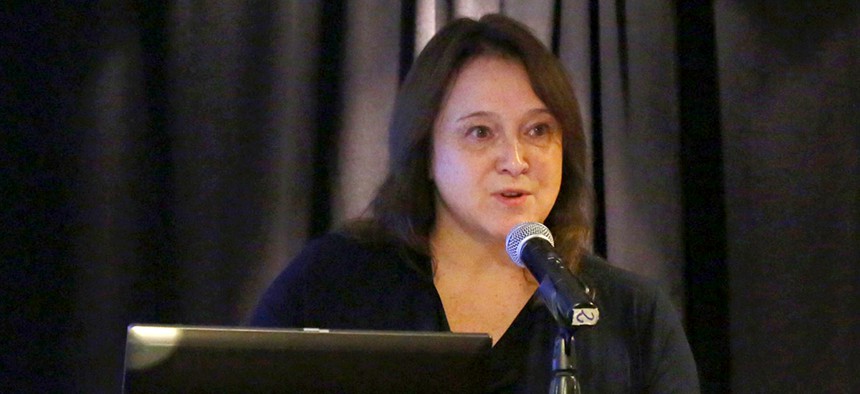New Tech Plans Aim to Take Copyright Office Out of the 1970s

Maria Pallante, Director of the US Copyright Office Alexandra Wyman/Invision/AP
While making specific tech upgrades is important, it will take a much more big-picture approach to truly modernize the office, said Director Maria Pallante.
One month after the online copyright registration system went dark for about a week, the U.S. Copyright Office has unveiled a 5-year plan to make it more tech savvy.
Released Oct. 23, the six-point plan is designed to be both transparent and flexible, said Maria A. Pallante, director of the Copyright Office, in a statement included with the plan.
“Customers should be able to transact with the office easily, quickly and from anywhere at any time, using mobile technologies and any number of consumer-friendly platforms and devices to secure rights or access data,” she said.
According to the document, the office plans to revamp its website, Copyright.gov, by improving the site’s organization and boosting its interface to make it easier to use. This overhaul would also include enhancing the public records search engine to allow users to save their queries and receive unlimited results. The office is also looking to finish digitizing its pre-1978 copyright records, according to the document.
While making specific tech upgrades is important, it will take a much more big-picture approach to truly modernize the office, Pallante said.
“It requires re-envisioning almost all of the Copyright Office’s services, including how customers register claims, submit deposits, record documents, share data, and access expert resources, and it requires meeting the diverse needs of individual authors, entrepreneurs, the user community and the general public,” she said.
The Copyright Office is looking to adopt cloud services and may examine requirements for “premium on-premises and off-premises hosting solutions” for its systems, according to the document. With that added technology, the office is looking to build a strong team of tech experts and create new positions related to technology support and Web services.
The plan was released seven months after a Government Accountability Office report detailed a wide array of technology failings associated with the Library of Congress.
If implemented, the plan could successfully transport the department out of the 1970s and into the current century, Pallante said.





